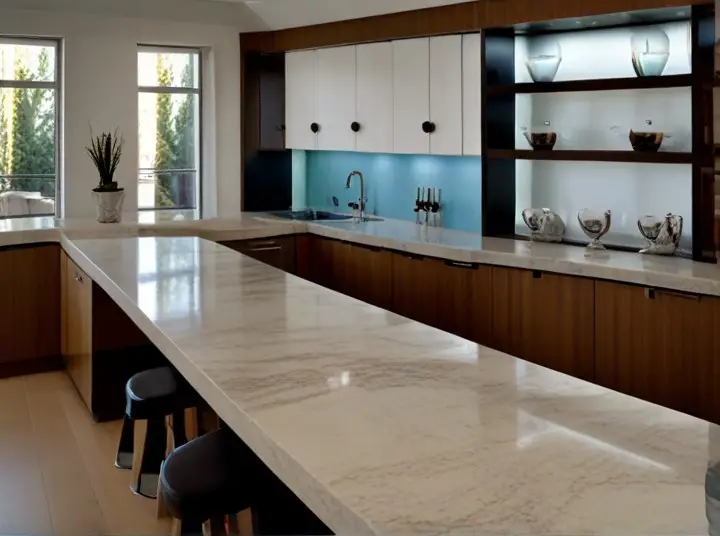How To Cut Paneling On a Table? | 9 Pro Steps
Introduction
When it comes to cutting paneling on a table saw, precision and preparation are paramount. Whether updating a room or working on a larger project, achieving clean, precise cuts can dramatically enhance the appearance and durability of your installation. Follow these professional steps for consistently smooth cuts, minimizing splintering and improving your overall craftsmanship.
1. Gather Necessary Tools and Materials
To start, make sure you have all the essential tools at hand. Here’s a comprehensive list to ensure a seamless process:
- Table Saw: Preferably one with adjustable blade height and a quality rip fence.
- Measuring Tape: For accurate measurements and layout.
- Carpenter’s Pencil: To mark cutting lines.
- Fine-Toothed Blade: Ensures clean cuts with minimal splintering.
- Clamps: Holds the panel securely during cutting.
- Safety Equipment: Safety glasses, gloves, and a dust mask are essential.
- Straightedge or T-Square: Useful for marking straight lines on paneling.
Starting with all the right tools at hand will enhance safety, precision, and ease as you cut through the material.
2. Measure and Mark the Paneling
Accurate measurement and marking are crucial for a flawless cut. Begin by measuring the exact size needed for the panel. Use a carpenter’s pencil to mark the cutting line clearly. Double-check your measurements to ensure accuracy before cutting, as precise marking avoids waste and ensures better fitment.
- Align the Tape Measure along the edge of the panel.
- Mark the Measurements on both ends of the panel.
- Connect the Marks with a straightedge or T-square to create a clean cutting line.
3. Choose the Right Blade
Selecting the right blade for cutting paneling is essential for avoiding splintering. A fine-toothed blade or plywood blade is often best for paneling, as it produces a smoother cut. Avoid standard blades, as they may tear or chip the thin veneer on paneling materials.
Blade Type Recommendations
- Carbide-Tipped Blade: Excellent for durability and sharpness.
- 80-Tooth Blade: Recommended for high-quality cuts on thin materials.
Using a fine-toothed blade minimizes the chances of chipping or splintering, providing a professional finish with each cut.
deck cleaner | pro tips for choose right deck cleaner & Maintaining
drip edge | Pro Tips For Install and Maintenance
4. Set the Table Saw Fence
To ensure a straight cut, align the table saw’s fence with the measurement marked on the panel. The fence serves as a guide, maintaining the correct distance between the blade and the edge of the panel.
- Adjust the Fence to match the measurement on the panel.
- Lock the Fence in place securely to avoid any movement.
Setting the fence accurately is essential to maintain consistent dimensions on every cut, and it eliminates the need for multiple measurements.
5. Adjust the Blade Height
Setting the blade height is essential to ensure the blade only cuts through the panel and not too deep into the table surface. Raise the blade to be just above the thickness of the paneling.
- Blade Height: Set it around 1/8 inch higher than the panel thickness.
By adjusting the height properly, you reduce the risk of kickback, create a smoother cut, and improve overall safety.

6. Use Clamps for Stability
Securing the panel with clamps is crucial to prevent movement, which can compromise accuracy. When the panel is held firmly in place, you’ll experience better control over the cut, yielding a cleaner edge.
- Place Clamps on both sides of the paneling.
- Tighten Clamps to ensure a secure hold.
Firmly clamped panels remain steady, minimizing vibrations and ensuring a more professional finish.
7. Perform a Test Cut
Before making the main cut, perform a test cut on a scrap piece of the same material. This will help you confirm the blade alignment, depth, and cleanliness of the cut.
- Prepare a Scrap Piece: Similar in thickness and material to the paneling.
- Run the Test Cut along the marked line.
By conducting a test cut, you’ll detect any adjustments needed and ensure the main cut is flawless, without risking damage to the primary panel.
8. Execute the Cut
With all settings verified, you’re ready to make the main cut. Turn on the saw, and follow these steps carefully to achieve a clean result:
- Align the Panel Edge with the table saw’s fence.
- Push the Panel Steadily through the blade, using even pressure.
- Keep Your Hands Clear: Use a push stick to maintain control while keeping a safe distance.
Apply consistent pressure throughout, guiding the panel slowly to avoid splintering. Do not rush; take your time to ensure the highest quality of cut.
9. Inspect the Cut and Sand Edges (If Necessary)
After completing the cut, inspect the edge to ensure a clean, splinter-free finish. If minor roughness is present, lightly sand the edges with fine-grit sandpaper.
- Examine the Cut Edge for smoothness.
- Lightly Sand any rough spots, if needed.
A smooth edge finish is vital for a professional look, particularly when the paneling is in a visible location. Sanding also ensures a more precise fit against adjoining panels or surfaces.
FAQS
1: What is the best way to cut paneling?
The. Panel install a new blade into the Stanley knife and score across the line we drew earlier and repeat this step a few times. Times once scored apply command force to the end of the panel to snap.
2: How do you cut paneling without a saw?
The first method is using a circular. The saw placed the wood to be cut on top of the expiatory. Board next draw your desires.
3: What is a good tool to cut plywood?
A circular saw, or skill saw is a regular tool used to cut plywood.
4: How do you cut wood quietly?
Cutting Wood with power tools makes the most noise. Cutting with hand-cutting tools is far less noisy. Cutting slowly will also reduce noise
5: What paint do I use for paneling?
After that, paint the trim a satin paint finish is the best paint finish for wall paneling.
Conclusion
Cutting paneling on a table may seem like a straightforward process, but attention to detail and precision are key to achieving professional results. By following this step-by-step guide and taking the time to measure, mark, and cut right, you’ll be well on your way to transforming any space with the timeless elegance of paneling.







